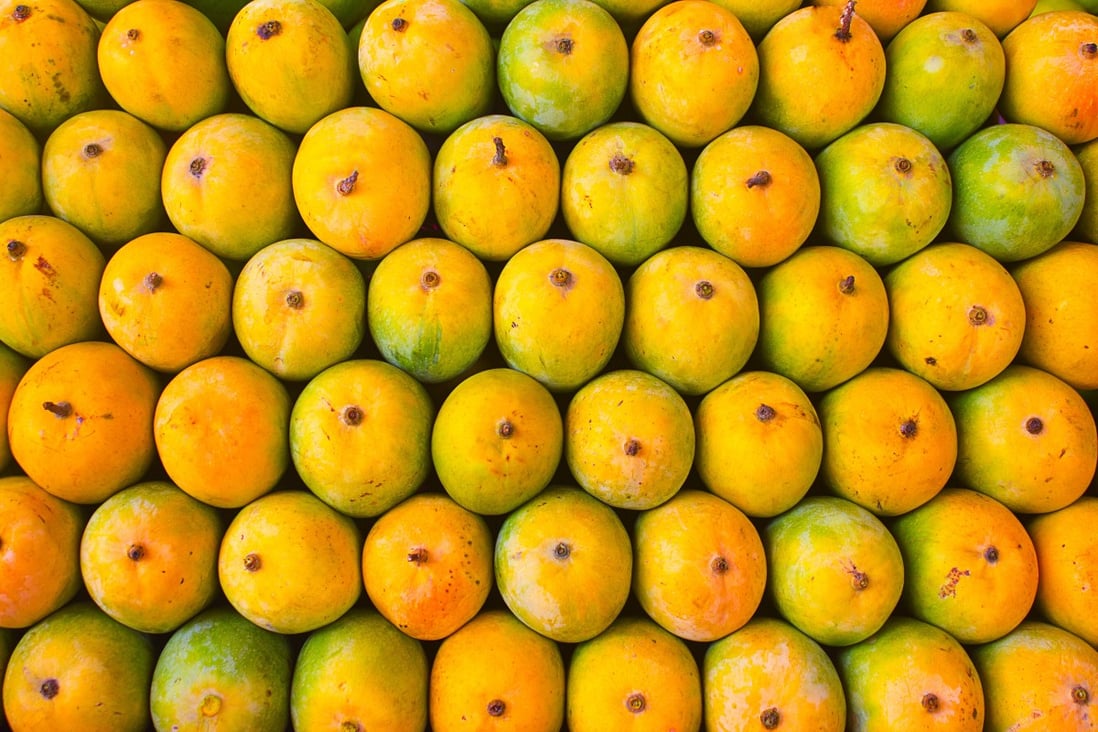
The hashtag #MangoWars went viral in India last weekend as thousands of Indians joined a Twitter tirade over which variety of mango is the best. The first salvo was fired by an internet user who said the Alphonso, an expensive variety grown in India’s western belt, was overrated.
“Alphonso is the most overrated stuff you will ever come across …. Try Dashahari, Chausa, Safeda and ultimate Langda/Malda,” he wrote. Within minutes, the tweet went viral as lovers of the Alphonso – named after a Portuguese general, Afonso de Albuquerque, who established Portuguese colonies in India – attacked this user.
“Send me your address. I’ll send you home-grown south Gujarat Kesar from my orchard … I’m pretty sure this will end the discussion and the war,” wrote one user. Another, a lover of the ripe green Langda variety, posted: “East or West, Langda is the best”. And so it went as angry exchanges, even insults, flew thick and fast between mango lovers, each claiming their region’s variety to be the best.
With their pulpy, juicy flesh, fragrant aroma and attractive looks, mangoes have a passionate fan base across the country of 1.3 billion. The mango is the national fruit – as it is in Pakistan and the Philippines – and discussions over which variety is the best often become heated.
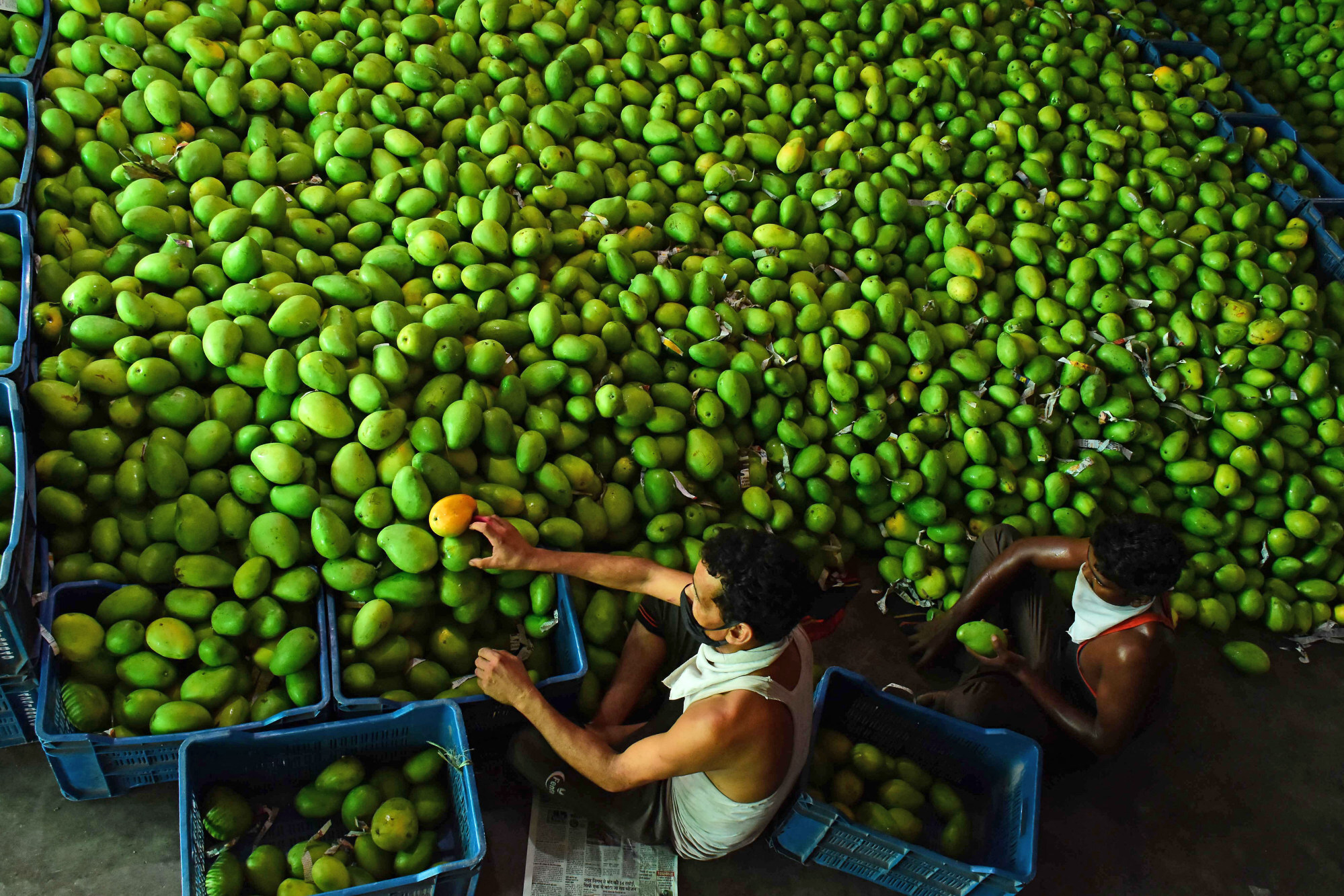
“With mango varieties you are never just selling a fruit. You’re selling emotions,” says Bhuvan Singh, a third-generation fruit vendor from Noida in Uttar Pradesh, who has been selling the fruit for three decades. “The Indian love for mangoes is unmatched. I often get entire families coming to my stall to buy the fruit, with each member picking out his own personal favourite.”
India, known as the “land of mangoes”, is the world’s largest producer of mangoes, accounting for almost 40 per cent of global production, followed by China and Thailand. More than 1,500 varieties are cultivated in India, each with its own distinct taste, shape and hue, among them the rose-tinted Gulab Khas, the Totapuri, shaped like a bird’s beak, and the voluptuous Neelam and Malda, to name a few.
Indians know Alphonso is ‘king of mangoes’. If only they could buy some
Northern Uttar Pradesh, synonymous with the ambrosial Dussehri mangoes, also grows the fibrous Chausa. Then there are Kesar, Banganpalli and Langda from southern Andhra Pradesh, while West Bengal takes pride in its Himsagar variety.
The onset of summer heralds mango season. The fruit can be eaten raw, cut into slivers and sprinkled with chilli flakes, or infused in drinks and dishes; if ripe enough, you can just suck out the pulp.
“Mangoes remind me of my childhood holidays with my grandparents,” says 56-year-old IT consultant Pratibha Chahal, a Singapore resident who grew up in India. “Those days we didn’t have a refrigerator, so we would tie them up in a muslin cloth, suspend them in the Ganges river to cool them and then enjoy them chilled.”

Indian celebrities – including Bollywood actors – have publicly expressed their love for mangoes. Kareena Kapoor Khan and Deepika Padukone are mango fans. The latter took to social media recently to post a picture of raw mango slices sprinkled with chilli powder. “You’re simply the best, better than all the rest … Better than anyone, anyone I ever met,” she wrote.
Indian chefs love mangoes for their versatility. “Mangoes are a cuisine in themselves,” says corporate executive chef Ritesh Negi, of the MBD Radisson Hotel, in Noida, Uttar Pradesh. “From desserts to dishes to salads, pickles and condiments, the fruit lends itself well to a wide variety of dishes,” he says.
In Gujarat, sandwiches with mango pulp are a common sight on roadsides, while paratha breads smeared with gooey mango purée are also a popular snack, he adds. Negi says that this season, mango salads, sorbets, granitas and mango mojito will rule. “We’re making two types of mango salads – one from raw fruit and the other from ripe ones,” he adds.

The former is a som tam-style Thai version with slivers of raw mango instead of papaya along with mint, cherry tomatoes, edamame beans, sweet chillies and kaffir lime; the other one is a combination of firm diced Alphonso mangoes with pomelo and lemon juice.
Restaurateur Amit Bagga, co-owner of Daryaganj, a popular restaurant in New Delhi, says there’s always great demand for spicy raw mango pickle and tart mango chutney, especially to eat with parathas stuffed with fillings such as potatoes, peas and cauliflower. “We offer our popular mango lassi to wash down the parathas. This is a quintessentially north Indian Punjabi meal,” he explains.
According to Sahil Arora, executive chef at the Shangri-La’s Eros Hotel in New Delhi, the mango is truly India’s national fruit because every state has a signature dish crafted from it, be it aam panna from Maharashtra, aam shrikhand from Gujarat, meen manga curry from Kerala, aam kasundi from Bengal or aam ka murabba from Punjab.
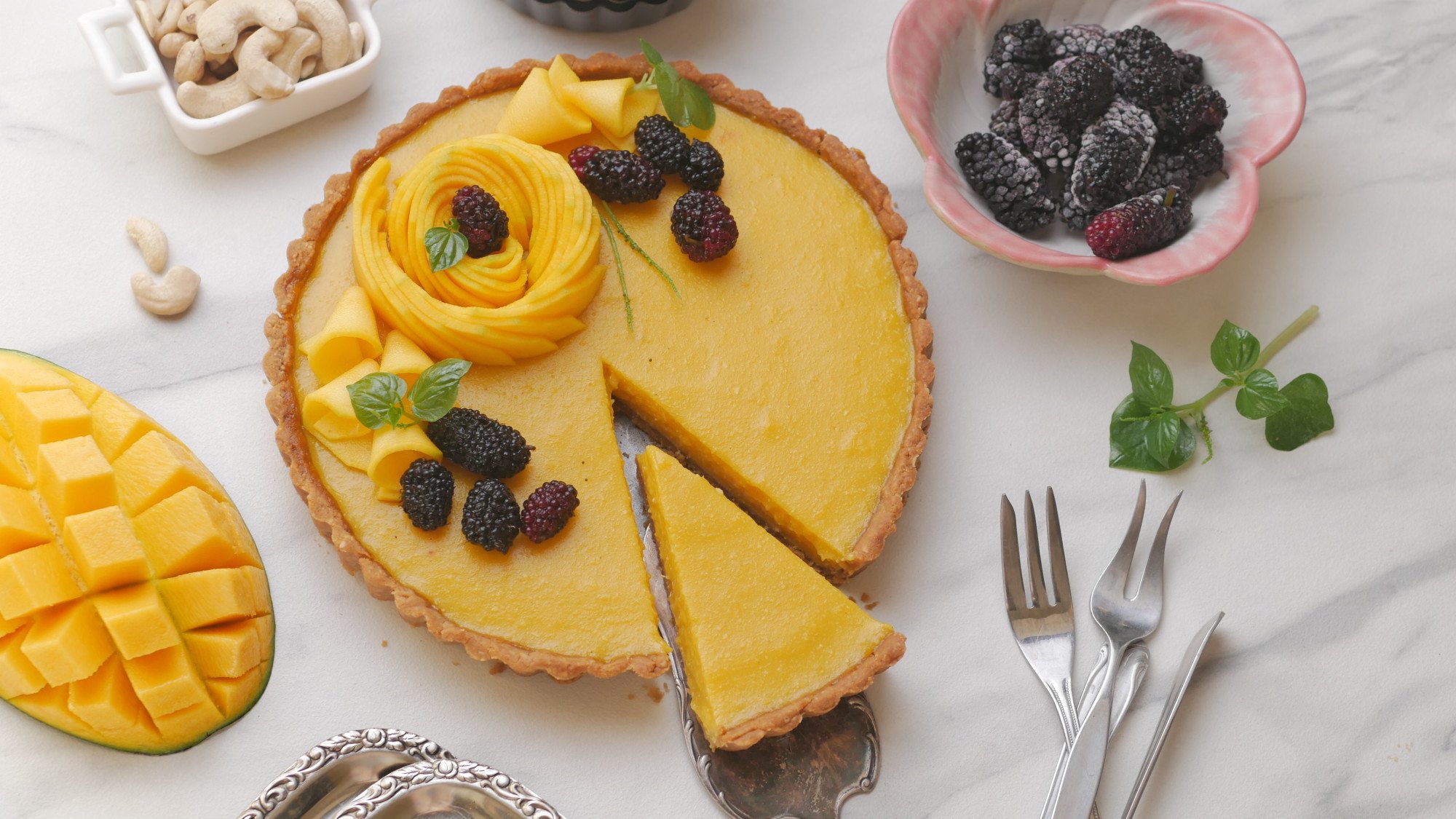
Such is the demand for mangoes from the hotel’s guests that it has mango-themed Sunday brunches and special pop-up menus. Some of the hotel’s signature dishes include Alphonso tart, mango cheesecake and healthy mango granola parfait with low-fat yogurt. Raw mango tortilla chips, candied mango and mango halva are also popular. “Our exclusive pop-ups for mango desserts incorporating over 20 varieties of the fruit are a bestseller,” Arora says.
Mangoes are native to India. They were first cultivated there more than 5,000 years ago in the hills of northeast India bordering Myanmar. In Indian culture, mango trees symbolise abundance, and the leaves and fruit are offered to gods at temples. Mango leaves are also hung outside homes to ward off evil spirits. Buddhists consider the fruit sacred, and it is mentioned in Hindu and Buddhist religious texts.
According to Mumbai-based food anthropologist Shikha Trivedi, Alexander the Great, who arrived in India in 326BC, grew so enamoured of the fruit during his stay in the country that he took various varieties back to Greece with him. In the seventh century, Hsuan-Tsang, one of the earliest Chinese scholar-travellers to India, noted how Indian kings planted mango trees along roads as a symbol of prosperity.
According to the treatise A Historical Dictionary of Indian Food, India’s first colonial traders – the Portuguese – loved mangoes so much they carried seeds from India to plant in whichever country they visited next.
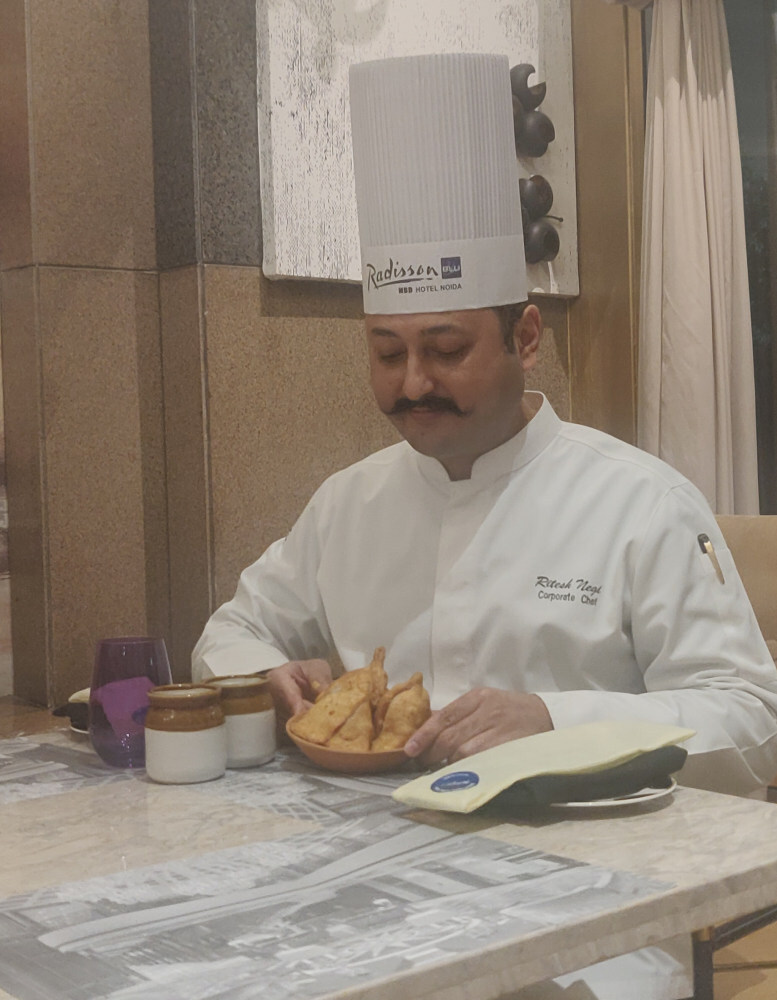
The third Mughal emperor, Akbar the Great, invited the country’s best horticulturists to lay out an exclusive mango garden with 100,000 trees in Darbhanga in the northeast of the country. Abul Fazl, the emperor’s court chronicler, sang paeans to the fruit, which he recorded in Ain-i-Akbari, a record of Akbar’s administration, calling it “unrivalled in colour, smell and taste”.
The fifth Mughal emperor Shah Jahan, who ruled from 1628 to 1658, took his passion for mangoes to a whole new level. He imprisoned his own son, Aurangzeb, because the latter kept all the mangoes in the palace for himself. But the emperor also rewarded his chefs for their inventive mango recipes like aam panna (raw mango juice), aam ka lauz (a spicy condiment) and the rice-based mango dessert aam ka meetha pulao.
The fruit has inspired poets. In the 19th century, Urdu poet Mirza Ghalib described a mango as a “delicious wine filled in a sealed glass”. Nobel laureate Rabindranath Tagore lauded the mango’s fragrant flowers in his poetry.
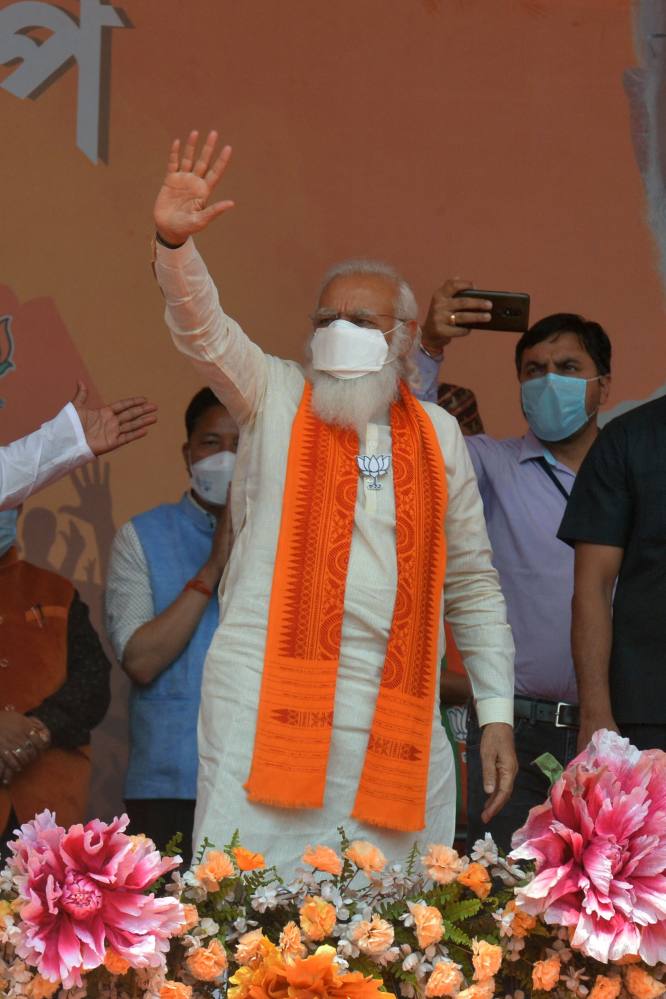
Mangoes have been enlisted in the services of diplomacy down the centuries too.
During their rule in India, the Portuguese gifted crates of Alphonso mangoes to Muslim rulers along the country’s western coast, Trivedi says. In 1937, boxes of mangoes were dispatched as a gift from the government of then British-ruled India to Britain’s King George VI at the time of his coronation. In 1968, Pakistani foreign minister Mian Arshad Hussain arrived in Beijing bearing the choicest Indian mangoes as a gift for Mao Zedong.
US President George W Bush was served mangoes at a state banquet on his visit to New Delhi in 2006 at the best of the then Indian prime minister, Manmohan Singh. Bush loved the fruit so much, he promptly signed a bilateral trade deal to allow the export of Indian mangoes to the United States.







